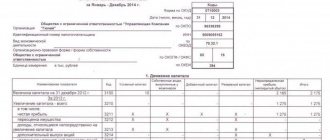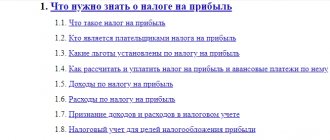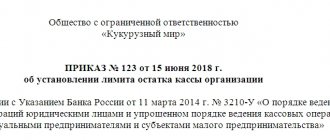Scope of application of PBU 16/02
Previously, PBU 16/02 was used only by commercial organizations, as well as in the preparation of consolidated financial statements.
Now PBU 16/02 is extended to non-profit organizations, with the exception of state and municipal institutions: they must apply this standard when disclosing information about the termination of the use of certain assets, which, in accordance with this provision, are considered long-term assets for sale.
At the same time, the rule on the use of PBU 16/02 in the preparation of consolidated financial statements has been excluded. Accordingly, all rules relating to consolidated financial statements are no longer in force.
New type of asset
PBU 16/02 introduced a new type of asset - long-term assets for sale.
What is a long-term asset for sale?
A long-term asset for sale means:
- an object of fixed assets or other non-current assets (except for financial investments), the use of which has been discontinued due to a decision to sell it, and there is confirmation that the resumption of use of this object is not expected. Confirmation may be a corresponding decision made by the management of the organization, the commencement of actions to prepare an asset for sale, the conclusion of a sale agreement, etc.;
- tangible assets intended for sale remaining from disposal, including partial, of non-current assets or extracted in the process of their current maintenance, repair, modernization, reconstruction, except for the case when such assets are classified as inventories (recognized as materials, spare parts or other types of inventories intended for further use by the organization in the production of products, performance of work, provision of services).
At the same time, non-current assets, the use of which is temporarily discontinued, are not considered long-term assets for sale for accounting purposes.
Accounting and evaluation
Long-term assets available for sale are accounted for as part of current assets separately from other assets.
A non-current asset available for sale is measured at the carrying amount of the corresponding fixed asset or other non-current asset, the use of which is discontinued due to a decision to sell it, at the time of its reclassification as a non-current asset available for sale. Subsequent valuation of long-term assets for sale is carried out in the manner prescribed for the valuation of inventories.
Book value refers to the net valuation of an object, that is, the cost at which it is reflected in accounting, minus regulatory values.
If the value of a long-term asset for sale decreases at the end of the reporting period, a reserve is created in accounting for the decrease in the value of this asset. If at the end of the next reporting period a further decrease in the value of a long-term asset for sale is revealed, the amount of the reserve is increased by the corresponding amount. If an increase in the value of this asset is detected, then the amount of the reserve is reduced (Information message of the Ministry of Finance of Russia dated July 9, 2019 No. IS-accounting-19).
In the balance sheet, the value of a long-term asset available for sale is reflected less a reserve for a decrease in the value of this asset. The creation, additional accrual and reduction of the specified reserve changes the expenses (income) of the period in which these operations are performed.
FSBU 6/2020 “Fixed assets”
Start of application: from January 1, 2022
For whom it is a must: for everyone except the budget
NB Small enterprises may not apply only certain provisions of FSBU 6/2020 (clause 3 of FSBU 6/2020)
What changed
OS cost limit
The limit on the value of an object for recognizing it as a fixed asset has been abolished. Now you can set the limit yourself (clause 5 of FSBU 6/2020)
Low value OS
Costs for the acquisition and creation of non-essential assets are recognized as expenses during the period of their implementation (clause 5 of FSBU 6/2020)
OS accounting
Fixed assets are accounted for at an amount equal to the difference between its original cost and the amounts of depreciation and impairment.
The initial cost of the operating system includes capital investment amounts. The increase in value is reflected at the time of completion of work to improve or restore it.
Depreciation of fixed assets
Depreciation must be calculated from the date of recognition of fixed assets in accounting. It is allowed, as before, to begin accruing depreciation from the 1st day of the month following the month of recognition of fixed assets.
The amount of depreciation is calculated so that by the end of the depreciation period the book value of the fixed asset becomes equal to its liquidation value, that is, from the cost of the fixed asset reduced by its liquidation value.
The frequency of depreciation calculation is not regulated by FSBU 6/2020.
OS revaluation
There is an obligation to check fixed assets for impairment, provided for by IAS 36 “Impairment of Assets”. Groups of fixed assets may be revalued at fair value at intervals established by the organization (clauses 15, 16 of FSBU 6/2020).
Reflection in accounting and reporting
Retrospectively
It is required to recalculate all accounting information about existing fixed assets for past periods, adjust the balances of account 01 and other related accounts as of the date of application of the new standard in the same way as if it had been applied from the moment the facts of economic life affected by it arose.
Please note that this option is the most accurate, but also the most labor-intensive.
Alternatively
Data for previous periods does not need to be recalculated. But, on January 1 of the first year of application of the new FSBU in accounting, it is necessary to make important adjustments, in particular, write off the book value of fixed assets that are non-essential assets, and for each fixed asset item, calculate the book value according to the rules of FSBU 6/2020.
In fixed asset accounting you need to know:
To switch to the application of the new FSBU 6/2020, it is necessary to make changes or additions to the accounting policies.
To prevent errors and distortions in accounting for fixed assets according to the new standard.
Reflection in reporting
The cost of long-term assets for sale is reflected in the balance sheet in the section “Current assets” as a separate item or is included in another item in the balance sheet, for example, “Other current assets” (Information message of the Ministry of Finance of Russia No. IS-accounting-19).
Profit (loss) associated with long-term assets for sale (including the creation and change in the amount of the reserve for impairment of value, the result of the sale) is reflected in the income statement as a separate item or is included in another item in the income statement, for example, “Other expenses” ", "Other income".
Disclosure of information on discontinued operations
Information about a new type of asset is subject to disclosure in the financial statements (PBU 16/02 supplemented by clause 23).
An organization in its financial statements must disclose the following information about long-term assets for sale, taking into account materiality:
- description of long-term assets for sale;
- a description of the facts and circumstances of the sale, including the proposed manner and period of the sale;
- profit (loss) associated with long-term assets available for sale and the line item in the income statement in which this profit (loss) is included (except in the case of its separate presentation directly in the income statement);
- in the case of reporting information by segments, the reportable segment, which includes the indicators associated with the long-term asset for sale.
Note that disclosure of information in the notes may be necessary even in a situation where data on long-term assets for sale is considered immaterial for the purposes of preparing the balance sheet and income statement.
Information on discontinued activities in reporting – 2022
Clause 7 of PBU 22/2010 has been presented in a new edition as of March 17, 2020. A significant error identified in the previous reporting year after the date of signing the financial statements for this year, but before the date of submission of such statements to the shareholders of the JSC, participants of the LLC, government body, local government body or other body authorized to exercise the rights of the owner, etc., as and before, it is proposed to correct with entries in the relevant accounting accounts for December of the reporting year (the year for which the annual financial statements are prepared).
The specified financial statements could be presented to other users. In this case, the statements in which a significant error is identified and corrected (corrected financial statements) are subject to re-submission to these users. Prior to the amendment on March 17, 2020, paragraphs 7 and 8 used the term “restated financial statements.”
The term “revised financial statements”, which appeared in paragraph 8 of PBU 22/2010, was replaced by the term “amended financial statements”.
Translation due to new circumstances
Translation of an object
from the composition of long-term assets for sale to the composition of fixed assets
may be due to the emergence of new facts and circumstances.
In this case , such a translation is not a correction of an error.
in accounting in the sense of PBU 22/2010. Referring to the provisions of PBU 1/2008, the Ministry of Finance in its recommendations to auditors invited organizations to develop a method of accounting for this fact of economic life in the manner established by this accounting standard. Based on the assumptions and requirements given in paragraphs 5 and 6 of PBU 1/2008, it is logical for organizations to use IFRS first. In relation to this case, one should resort to IFRS 5 “Non-current assets held for sale and discontinued operations” (put into effect on the territory of the Russian Federation by order of the Ministry of Finance of Russia dated December 28, 2015 No. 217n).
The subsequent assessment of long-term assets for sale is carried out in the manner prescribed for the assessment of inventories (MPI).
Inventory that is obsolete, has completely or partially lost its original quality or current market value, the selling price of which has decreased, are reflected in the balance sheet at the end of the reporting year minus a reserve for a decrease in their value
(in 2022 - clause 25 of PBU 5/01 (approved by order of the Ministry of Finance of Russia dated 06/09/01 No. 44n)). The reserve for reducing the cost of inventories is formed at the expense of the organization’s financial results by the amount of the difference between the current market value and their actual cost, the latter being higher than the current market value.
If the value of a long-term asset for sale decreases at the end of the reporting period, a reserve is created in accounting for the decrease in its value:
Debit 91-2 Credit 14
– a reserve has been created for a long-term asset for sale.
If at the end of the next reporting period a further decrease in the value of a long-term asset for sale is revealed, the amount of the reserve is increased by the appropriate amount:
Debit 91-2 Credit 14
– the amount of the reserve for a long-term asset for sale has been increased.
As the value of this asset increases, the amount of the reserve decreases:
Debit 14 Credit 91-1
– the amount of the reserve for a long-term asset for sale was reduced.
In the balance sheet, the value of a long-term asset available for sale is reflected less a provision for a decrease in its value. The creation, additional accrual and reduction of the specified reserve changes the expenses (income) of the period in which these operations are performed.
Profit (loss) associated with long-term assets available for sale (including the creation and change in the amount of the reserve for impairment of value, the result of the sale), in the income statement:
- reflected as a separate item if its value is significant, or
- included in another report item, for example “Other expenses” (“Other income”).
Recognition of an estimated liability
When activities are recognized as being terminated, the organization may have obligations. They may be stipulated by legal requirements, contract terms, or voluntarily assumed by the organization to individuals and legal entities whose interests will be affected as a result of the termination of activities (clause 8 of PBU 16/02).
To settle such obligations, the amount or timing of which is uncertain, it is recommended to recognize an estimated liability in accordance with the established procedure.
Information disclosure
Information about long-term assets available for sale should be disclosed in the notes to the balance sheet and income statement, taking into account materiality. Such information may also be necessary in cases where data on long-term assets available for sale is considered immaterial for the purposes of preparing the balance sheet and income statement.
The information disclosed in the explanations includes (clause 23 of PBU 16/02):
- description of long-term assets for sale;
- a description of the facts and circumstances of the sale, including the proposed manner and period of the sale;
- the amount of gain (loss) associated with long-term assets available for sale and the income statement line item in which that gain (loss) is included (unless such gain (loss) is presented separately directly on the income statement).
If an entity reports segment information, it must indicate the reporting segment to which the items associated with the non-current asset available for sale relate.
Replacing “reserve” with “estimated liability”
As a result of recognition of the activity as being terminated, an organization, as a rule, has obligations stipulated by the requirements of the law, the terms of contracts, or voluntarily assumed by the organization to individuals and legal entities whose interests will be affected as a result of the termination of activities.
To settle such obligations, the amount or timing of which there is uncertainty, the organization previously formed a reserve. Now it must recognize the estimated liability in the prescribed manner (clause 8 of PBU 16/02). Accordingly, all rules governing the creation and use of the reserve, as well as the disclosure of related information, are no longer in force.
This procedure is regulated by PBU 8/2010 “Estimated liabilities, contingent liabilities and contingent assets”.
Now, if the recognition of an activity as discontinued occurs after the end of the annual reporting period, but before the date of signing the organization’s annual financial statements, these statements must be clarified in terms of disclosing the indicators provided for in clause 11 of PBU 16/02 for the period covered by these statements . The consequences of recognizing an activity as discontinued (recognition of estimated liabilities, impairment of the value of assets and loss from impairment of their value) in this case are reflected in the manner prescribed for accounting for events after the reporting date. The reference to PBU 7/98 “Events after the reporting date” when reflecting the consequences of recognizing an activity as discontinued has been replaced by a reference to the procedure provided for accounting for events after the reporting date.
New edition of PBU 18/02
Order of the Ministry of Finance of Russia dated November 19, 2002 No. 114n approved the accounting regulation “Accounting for calculations of corporate income tax” - PBU 18/02. But as of reporting for 2022, this document is valid in a new edition - Order of the Ministry of Finance dated November 20, 2018 No. 236n.
The main purpose of the changes is to bring the accounting rules for tax liabilities and related accounting items into compliance with IAS 12 “Income Taxes”. It was put into effect on the territory of Russia by order of the Ministry of Finance dated December 28, 2015 No. 217n.
Now it is necessary to calculate and reflect in accounting according to the new rules:
- temporary differences;
- permanent differences;
- net profit.
The corresponding changes to the reporting forms were made by Order of the Ministry of Finance dated April 19, 2019 No. 61n.
The concept of temporary differences has been expanded
In particular, the concept of temporary differences has been clarified. They now mean not only income and expenses that form the accounting profit (loss) and the tax base for tax in different reporting periods, but also the results of operations that are not included in the accounting profit (loss), but form the tax base for tax in other reporting periods. periods. For example, these are differences arising as a result of revaluation of fixed assets and intangible assets.
Another approach to cases where temporary differences arise
Starting from 2022, PBU 18/02 has updated the list of cases in which temporary differences are formed (previously these were separate lists of cases in which deductible and taxable temporary differences are formed). Some were corrected, others were added or deleted. Now let's talk about everything in order.
The following cases have been changed in the list:
| Formulation from 2022 | Formulation until 2022 |
| Application of different rules for assessing the historical cost and depreciation of non-current assets for accounting and tax purposes | Application of different methods of calculating depreciation for accounting purposes and determining income tax |
| Application of different methods of forming the cost of products/goods/works/services sold for accounting and taxation purposes | Application of different methods of recognizing commercial and administrative expenses in the cost of products/goods/work/services sold in the reporting period for accounting and tax purposes) |
| Application, in the case of the sale of fixed assets, of different recognition rules for accounting and taxation purposes of income and expenses associated with their sale | Application in the case of the sale of fixed assets of different recognition rules for accounting and taxation purposes of the residual value of fixed assets |
| Application of various rules for reflecting interest paid by an organization for providing it with funds (credits, borrowings) for use for accounting and taxation purposes | Recognition of interest income for accounting purposes based on the assumption of temporary certainty of facts of economic activity, and for tax purposes - on the cash basis |
| A loss carried forward that was not used to reduce income tax in the reporting period, but which will be accepted for tax purposes in subsequent reporting periods | A loss carried forward that was not used to reduce income tax in the reporting period, but which will be accepted for tax purposes in subsequent reporting periods, unless otherwise provided by the legislation on taxes and fees |
From 2022, new cases of temporary differences have also been introduced:
- revaluation of assets at market value for accounting purposes;
- recognition in accounting of impairment of financial investments for which their current market value, inventories and other assets are not determined;
- application of different rules for creating reserves for doubtful debts and other similar reserves for accounting and tax purposes;
- recognition of estimated liabilities in accounting;
In addition, from 2022 the following cases are excluded from the list:
- the presence of accounts payable for purchased goods (work, services) when using the cash method of determining income and expenses for tax purposes, and for accounting purposes - based on the assumption of temporary certainty of the facts of economic activity;
- recognition of revenue from the sale of products (goods, works, services) in the form of income from ordinary activities of the reporting period.
KEEP IN MIND
According to the Ministry of Finance, the list of cases of occurrence of temporary differences given in PBU 18/02 from 2022 is not exhaustive. They can also form in other cases (information message dated December 28, 2018 No. IS-accounting-13).
New procedure for calculating temporary differences
From 2022, organizations determine temporary differences (TD) at the reporting date using the following formula:
| BP = ASSET (LIABILITY) VALUE, balance sheet – ASSET VALUE FOR TAXATION |
New indicator
Amendments to PBU 18/02 also changed the very logic of calculating net profit or loss.
Since 2022, an indicator has been introduced that characterizes the change in the economic benefits of an organization in connection with taxation of profits.
Thus, in order to describe the change in the volume of economic benefits of the organization for the reporting period in connection with the taxation of profits, PBU 18/02 introduced the indicator “Profit tax expense (income)”, which was absent until 2022.
Income tax expense (income) is the amount of income tax recognized in the income statement as an amount that reduces (increases) profit (loss) before tax when calculating net profit (loss) for the reporting period.
Income tax expense (income) is determined as the sum of current and deferred income tax. In this case, deferred tax for the reporting period is determined as the total change in deferred tax assets and deferred tax liabilities for this period, except for the results of transactions not included in accounting profit (loss).
By the way, the edition of PBU 18/02 from 2022 provides a practical example of determining income tax expense and related indicators. For clarity, the example also calculates the amount of net profit for the reporting period. Moreover, the calculation is performed in two ways - by reducing profit before tax by the amount:
- income tax expense (the so-called balance sheet method);
- conditional expense, adjusted for the amounts of permanent tax expense, increase in deferred tax asset and deferred tax liability of the reporting period (the so-called deferral method).
KEEP IN MIND
PBU 18/02 does not limit the use of any of these methods of your choice.
The definition of current income tax has been clarified
According to the new edition of PBU 18/02, the current income tax is an income tax for tax purposes, determined in accordance with the legislation of the Russian Federation on taxes and fees.
Note that previously it was determined based on the amount of conditional expense (conditional income), adjusted for the amount of permanent tax liability (asset), increase or decrease in deferred tax asset and deferred tax liability of the reporting period.
In connection with the clarification of the definition of the current income tax, corresponding changes were made to paragraphs 20 and 21 of PBU 18/02.
The composition of indicators for the financial results report has been changed
In accordance with PBU 18/02, indicators characterizing income tax must be disclosed in the statement of financial results of the organization. In the new edition, these indicators include:
- income tax expense (income);
- income tax related to transactions not included in accounting profit (loss).
Note that until 2022 these were permanent tax liabilities (assets), changes in deferred tax assets and liabilities, and current income tax.
The income tax expense (income) indicator is reflected as an item that reduces (increases) profit (loss) before tax when forming net profit (loss) for the reporting period. In Form No. 2 it is shown with a division into deferred income tax and current income tax.
The income tax indicator for transactions not included in accounting profit (loss) is reflected as an item that reduces (increases) net profit (loss) when forming the total financial result of the period.
The content of the explanations to the reporting has been clarified
In accordance with PBU 18/02, the explanations to the balance sheet and the income statement must disclose the information necessary for users of the statements to understand the nature of the indicators related to the organization’s income tax.
Note that until 2022, the relevant indicators were subject to disclosure in the explanations only in the presence of permanent tax liabilities (assets), changes in deferred tax assets and deferred tax liabilities that adjust the indicator of conditional expense (conditional income) for income tax. In the new edition of PBU 18/02, the content of such explanations has been clarified.
The explanations should disclose deferred income tax due to:
- the occurrence (settlement) of temporary differences in the reporting period;
- changes in tax rules (including rates);
- recognition (write-off) of deferred tax assets due to a change in the probability that the organization will receive taxable profit in subsequent reporting periods.
In addition, the explanations should contain values that explain the relationship between income tax expense (income) and the profit (loss) indicator before tax. For example this:
| Formulation from 2022 | Formulation until 2022 |
| Applicable tax rates | Reasons for changes in applied tax rates compared to the previous reporting period |
| Conditional expense (conditional income) for income tax | Conditional expense (conditional income) for income tax Permanent and temporary differences that arose in the reporting period and resulted in the adjustment of the conditional expense (conditional income) for income tax in order to determine the current income tax Permanent and temporary differences that arose in previous reporting periods, but resulted in an adjustment of the conditional expense (conditional income) for income tax of the reporting period due to changes in the requirements for the recognition of current income tax |
| Fixed tax expense (income) | Amounts of a permanent tax liability (asset), a deferred tax asset and a deferred tax liability Amounts of a deferred tax asset and a deferred tax liability written off in connection with the disposal of an asset (sale, transfer on a gratuitous basis or liquidation) or type of liability |
The Ministry of Finance especially notes that the list of indicators disclosed in the explanations given in PBU 18/02 is not exhaustive. The organization must include in the explanations other information necessary for users of the statements to understand the nature of the indicators related to the organization’s income tax.
The procedure for applying PBU 18/02 by the participants of the State Property Committee has been clarified
Since 2022, PBU 18/02 has included special provisions on the procedure for its application by members of a consolidated group of taxpayers. In particular, it has been established that such persons:
- determine temporary and permanent differences based on their tax base included in the consolidated tax base (formed by the responsible participant in accordance with the legislation on taxes and fees outside the accounting system);
- reflect deferred tax assets in accounting, taking into account all deductible temporary differences, except for 1) cases where there is a likelihood that the deductible temporary difference will not be reduced or fully repaid in subsequent reporting periods, 2) the amount of loss received by the participant, taken into account when determining the consolidated tax bases for this period;
- current income tax is formed in accounting on a separate account for accounting of settlements with group members; the responsible participant reflects on it the amount of income tax payable for the consolidated group as a whole;
- disclose separately in the statement of financial results the difference between the amount of current income tax calculated by the participant (including the responsible participant) for inclusion in the consolidated tax base of such a group, and the amount of funds due from the participant (participant) based on the terms of the agreement on the creation of the consolidated tax group .
From 2022, the article in the financial results report reflecting this difference is called “Redistribution of income tax within the consolidated group of taxpayers.”
Other changes to PBU 18/02
In connection with the described amendments, a number of norms of PBU 18/02 have been clarified:
- Section II has been given a new name “Permanent and Temporary Differences” (until 2022 it was called “Accounting for Permanent Differences, Temporary Differences and Permanent Tax Liabilities (Assets)”);
- in paragraph 20, the procedure for reflecting conditional expenses (conditional income) for income tax on accounting accounts is excluded;
- paragraph 21 excludes the procedure for determining the amount of conditional income tax expense in the absence of permanent and temporary differences;
- The appendix to PBU 18/02 with a practical example of calculation for determining the current income tax has been excluded.
The following terminological clarifications have also been made:
- the term “permanent tax liability (asset)” is replaced by “permanent tax expense (income)”;
- the term “state (municipal) institutions” has been replaced by “public sector organizations”.
Please note that the new edition of PBU 18/02 must to the accounting (financial) statements for 2022. In this case, the organization has the right to decide to apply these changes before the specified period. But then such a decision must be disclosed in the organization’s accounting (financial) statements for the year in which the changes will be applied for the first time, as well as in the accounting policies.







